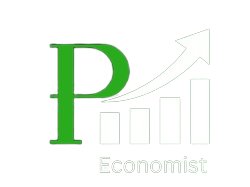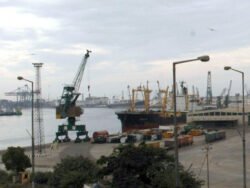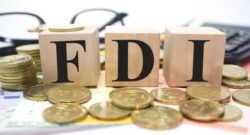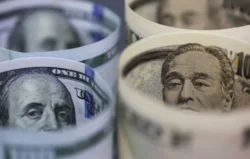A glimmer of hope for economy amidst lingering challenges

06 June 2024
Published in: The Express Tribune
In recent years, Pakistan has grappled with some tough economic hurdles: high inflation, currency depreciation and a hefty budget deficit. But lately, there’s been a noticeable push from the government to tackle these issues head-on and steer the nation toward stability.
Let’s delve into some key economic and political moves Pakistan has made to shore up its economic and political foundations.
Pakistan is facing inflation for the past two years. The Consumer Price Index (CPI) skyrocketed to a staggering 38 per cent in May 2023. This put a significant strain on the population’s finances. However, a dramatic shift occurred in May 2024. The CPI took a surprising turn downward, dropping to 11.8 per cent. This positive development brought much-needed relief, especially with food prices experiencing a 7.8 per cent decline in just one month. Analysts had predicted a more modest decrease to 13.7 per cent, making the actual drop even more welcome.
It’s important to understand that despite this encouraging trend, overall prices haven’t actually decreased. The good news is that the rate of increase has slowed down significantly. However, there are still challenges ahead. Potential tax hikes and the upcoming budget may put renewed pressure on inflation. Despite these concerns, falling global commodity prices and a decrease in domestic demand are expected to keep inflation in check. Forecasts predict it to stay within a range of 13-15 per cent in the coming year.
This, coupled with a recent drop in fuel prices courtesy of OGRA, could offer a bit of relief to Pakistani households.
Finance Minister Muhammad Aurangzeb is notably upbeat about the prospects of a policy rate cut by the State Bank of Pakistan (SBP) later this year, aligning with the current inflation trends. Reports even suggest that the SBP might slash its key interest rate by 100 basis points following a steady 22 per cent rate for seven consecutive policy meetings.
The government’s drive to ramp up revenue is paying off, as evidenced by the Federal Board of Revenue (FBR) surpassing its May revenue target. And the simplification of business registration by the Board of Investment (BoI) is poised to spur new business ventures while broadening the tax base, a win-win for economic growth.
Setting a 3.6% GDP growth target for FY25 underscores the government’s ambition for economic expansion, with initiatives like the Tajir Dost Scheme geared towards formalising the economy and propelling growth.
Foreign investment is pouring in, painting a hopeful picture for Pakistan’s energy sector. Saudi Aramco’s hefty investment signifies foreign trust in Pakistan’s potential, potentially bolstering energy security and curbing energy costs — a vital ingredient for economic stability. The government’s pivot towards a tech-driven economy, as highlighted by the IT minister’s assurances to the IMF, could open up new job avenues, attract more investments and boost efficiency across sectors.
In another significant move, FY24 has brought significant improvement, with net FDI repatriation totalling $812 million during the first 10 months. This relief comes as the SBP eased restrictions on profit and dividend repatriation, benefiting foreign investors and multinational corporations whose payments were stalled for over a year. Leading this uptrend in repatriation were sectors like manufacturing, trade, financial business and power, with investors from the UAE, the UK, China and the US being the top contributors.
Despite this positive reversal, challenges persist. Recently, the International Air Transport Association urged Pakistan and Bangladesh to release blocked funds from airline revenues earned in these markets, with Pakistan having $411 million stuck primarily due to lengthy processing delays. With things improving Pakistan will get over this as well.
Pakistan’s diplomatic efforts, particularly in strengthening ties with nations like Kuwait, bode well for increased trade and collaboration — a boon for both economies.
Prime Minister Shehbaz Sharif’s visit to China is a significant stride, as nurturing strong ties with key partners is pivotal for attracting investments and securing foreign policy victories. During his visit, the focus will likely be on fortifying CPEC — a partnership that Chinese Ambassador Jiang Zeidong believes will project “solidarity and cooperation” between the two nations.
Notably, China has already poured $25.4 billion into Pakistan, generating thousands of jobs through infrastructure projects like roads and power generation.
In discussions with Chinese counterparts, the finance minister outlined a robust “road to market” strategy, emphasising export-led growth, foreign direct investment and access to international capital markets.
Moreover, Pakistan eyes the Chinese capital markets through its inaugural panda bond aimed at raising $300 million — a promising endeavour once Pakistan’s credit rating improves.
Despite these rays of hope, Pakistan still grapples with significant hurdles, particularly political instability — a longstanding roadblock to economic progress. The key lies in sustained government commitment and a focus on long-term plans. Ensuring transparency and accountability in governance will be paramount, given past lapses. Reforms are imperative to address issues like elite capture, amnesty schemes favouring the wealthy and unsustainable debt — areas where past administrations have faltered.
In a nutshell, Pakistan’s recent economic and political strides paint a picture of a nation poised for change. While challenges persist, the concerted efforts towards fiscal consolidation, attracting foreign investment and fostering a digital economy signal a promising trajectory. But the road to stability is long, hinging on Pakistan’s unwavering commitment to reforms and its ability to cultivate a predictable and stable environment for economic growth.





